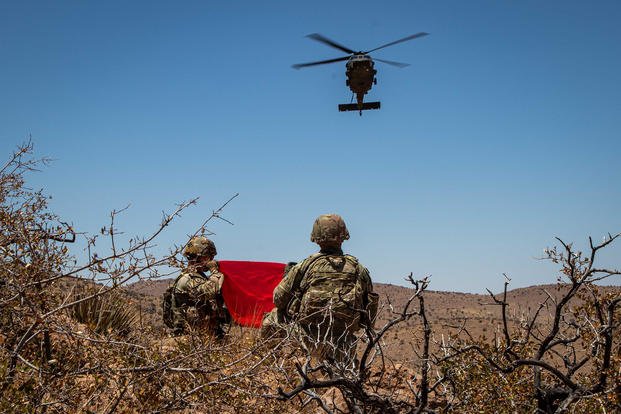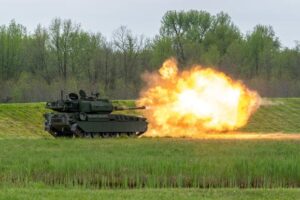The Army’s Strategic Shift: A Look into Major Changes and Cutbacks
The U.S. Army is preparing for one of its most significant restructuring efforts in recent history, as revealed by internal documents reviewed by Military.com. This transformation involves cutting at least 2,000 positions, encompassing both civilian and military roles, while also slashing funds for outdated drone and vehicle programs.
Army leaders presented this ambitious reorganization plan to top officials earlier this month. The initiative is designed to streamline operations and redirect resources toward emerging technologies, pivotal for modern warfare, especially in the Indo-Pacific theater.
Army Secretary Dan Driscoll and General Randy George emphasized the necessity of this overhaul in a joint memo, stating, “Every role must sharpen the spear or be cut away.”
Part of the restructuring includes the elimination of 1,000 Army staff positions at the Pentagon and the disbanding of unspecified air cavalry units. Additionally, certain units will be consolidated or deactivated, leading to further personnel reductions.
For instance, the U.S. Army Japan Headquarters is set to merge with the 4th Multidomain Task Force, resulting in a reduction of 170 positions. On the hardware front, the Army plans to halt acquisitions of the Gray Eagle drone and cut $498 million from the Armored Multi-Purpose Vehicle purchases.
All commands will see a 20% reduction in temporary duty funding, and there will be a $346 million cut in funding for collective training barracks, which serve as housing during major training exercises and other educational programs.
Despite these changes, the overall impact on the Army’s size remains uncertain. The plan aims to “responsibly balance end strength,” striving for a “leaner, more lethal Army.”
The Army has limited soldiers’ reenlistment options while it evaluates potential troop cuts. This move is part of broader efforts to accommodate the financial demands of President Donald Trump’s Golden Dome missile defense system, projected to cost at least $175 billion, with likely budget reallocations needed from the Army.
In contrast, Army recruitment has experienced a notable increase in 2025, following two years of reforms such as the Future Soldier Preparatory Course. This initiative, which assists recruits in meeting academic and physical standards, has accounted for a quarter of last year’s enlistments. Plans are in place to expand the program’s capacity, allowing for 189 additional trainees annually.
The Army also intends to abandon research into electric vehicles and fuel-saving technologies. Critics, particularly Republicans, have questioned the feasibility of electric vehicles in combat scenarios, despite the logistical complexities and expenses associated with traditional fuel.
“No more climate change worship. No more electric tanks,” Defense Secretary Pete Hegseth remarked at the U.S. Army War College, dismissing what he referred to as “woke bull—-.”
Key Budget and Structural Adjustments
- Army Prepositioned Stocks funding reduced by $337 million.
- Defense Language Institute budget cut by $30 million.
- Army Geospatial Center funding reduced by $50 million.
- Virtual reality training programs cut by $52 million.
- Procurement of TOW wire-guided missiles to be ceased.
- Discontinuation of “anti-idle” vehicle technology research.
- Creation of a skill identifier for robotics and autonomous systems training.
- Combination of 56th Theater Fires Command with 2nd Multidomain Task Force, resulting in a 10-position reduction.
- 18th Field Artillery Brigade to merge with 5th Multidomain Task Force, cutting 20 positions.
- 4th Infantry Division’s armored brigade to transition to a Stryker Brigade Combat Team.
- 3rd Cavalry Regiment to switch from Strykers to Abrams tanks, becoming an Armored Brigade Combat Team.
- Three Army National Guard units to transition to Mobile Brigade Combat Teams using the Infantry Squad Vehicle.
- Deactivation of all Army Reserve Air Cavalry and Expeditionary Combat Aviation Brigades.
- MEDEVAC units to reduce aircraft capacity from 15 to 12.
- Combining Army Training and Doctrine Command with Futures Command, eliminating approximately 400 positions.
- Cancellation of the planned activation of two reserve artillery units and three reserve electromagnetic warfare companies.
- Relocation of 4th Battalion, 60th Air Defense Artillery Regiment from Fort Sill to Fort Bliss.
- Closure of the 4th Security Force Assistance Brigade and 54th Security Force Assistance Brigade.
- Army Reserve to receive two High Mobility Artillery Rocket System battalions and three HIMARS batteries.
- Formation of Western Hemisphere Command by merging U.S. Army North, Forces Command, and U.S. Army South, eliminating 339 positions.
“`










